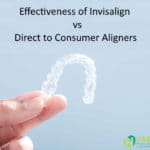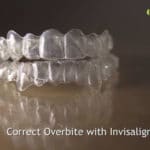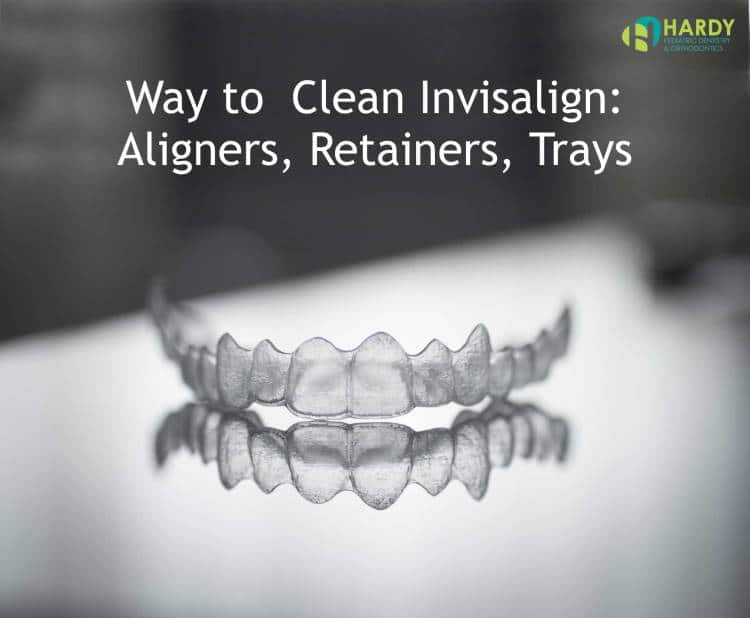One of the most critical components of Invisalign aligners is that they must be cleaned. Even if you intend to remove your aligners after a few weeks, you must first clean them. Another factor that may influence future processing is that you will be wearing a ridiculous and stinking pair of aligners.
If you do not properly care for your Invisalign aligners, bacteria can grow and create smells, aligner decoloration, and affect your teeth’ health. These aligners, like your teeth, must be cleaned daily to guarantee you get the best treatment possible.
How to clean invisalign retainers?
Here’s what a typical day should look like for an Invisalign maintenance:
- Clean them everyday
It is expected that you would sleep with your aligners in place. Many germs multiply while you sleep, so they must be removed before you wake up. When you get up, the first thing you should do is clean your mouth to get rid of the bacteria. Make sure the trays are clean before inserting them into your mouth. - When you take your aligners out of your mouth, rinse them.
When you remove your invisible aligners, make sure to rinse them. The rinse removes the dried saliva. Always transport them in a case to keep them from drying out or becoming contaminated with bacteria. Warmer temperatures may twist and bend the trays, therefore cold water rinses are preferable. - Brush and use dental floss before you put on the trays. You should remove them before eating or drinking. Before you change it, remember to brush and floss your teeth. Cleaning your teeth removes bacteria and food particles that have become lodged between your teeth. If they are not removed, they may create cavities and other health problems.
- Soak trays every day. Soaking cleansing crystals or denture cleaners is the simplest approach to ensure that it works. Boiling water should not be used to immerse the trays as this could cause damage. After soaking, remove any residual food particles with a spare toothbrush.
Learn Advantages of Invisalign Treatment
How to Clean Invisalign Trays?
Baking Soda Solution
Mix 1 tablespoon baking soda into 1/2 cup water until it has a uniform consistency. Brush the trays thoroughly until no residue remains after sixty minutes in the solution. Baking soda includes sodium bicarbonate’s active component, which is employed in the purification or whitening process.
Peroxide Solution
Soak the trays for 30 minutes in the same amount of hydrogen peroxide and water. Before putting it in your mouth, rinse it completely.
Vinegar and Water
3 parts water, 1 part white distilled vinegar Soak and rinse for at least 20 minutes before brushing. To avoid a vinegar flavor, thoroughly rinse the aligners.
Soap Solution
Stir a gentle, unscented soap into the heated water until suds form. Soak in the solution for around 30 minutes. Brush and rinse it before putting it in your mouth.
Effortless Cleaning With Retainer Cleaners
For those who don’t want to or don’t have the time to prepare their own solution, there are permanent cleansers available for buy at your local store. When purchasing retainer cleansers, it is important to read the instructions on the label carefully because there are several varieties available, some of which can be used in sonic cleaning machines and others which must be soaked overnight.
These cleaners come in the form of tablets or powder that must be dissolved in water. It is a powerful cleaning agent that removes plaque and bacteria from the teeth. In the end, the options indicated above are more expensive.
Source:
- Long-term effects of different cleaning methods on copolyester retainer properties
- Tsolakis AΙ, Kakali L, Prevezanos P, Bitsanis I, Polyzois G. Use of Different Cleaning Methods for Removable Orthodontic Appliances: A Questionnaire Study. Oral Health Prev Dent. 2019;17(4):299-302. doi: 10.3290/j.ohpd.a42685. PMID: 31204392.
Recent Content:
 What is The Difference Between Invisalign and Direct to Consumer Aligners
What is The Difference Between Invisalign and Direct to Consumer AlignersDespite the fact that they are both transparent aligners, these two devices are extremely different. Examine the differences between Invisalign and Direct to Consumer Aligners to choose which is best for you. How Effective is Invisalign Vs Direct to Consumer Aligners Invisalign and Direct to Consumer Aligners are both forms of transparent aligners used to […]
 Correcting Overbites with Invisalign
Correcting Overbites with InvisalignA malocclusion in which the upper front teeth overlap the lower front teeth is known as an overbite. It is the most common dental problem, accounting for more than 70% of all dental problems and resulting in an uneven and unnatural smile. We’re here to help you figure out if clear aligners like Invisalign can […]

